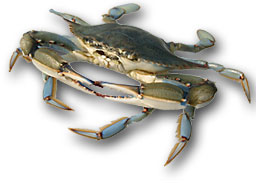Cultural History of Watermen
Watermen are people who make a living harvesting from the water. On the Chesapeake Bay, the blue crab is a species of primary importance to watermen. Much like the blue crab, watermen are an icon of the Chesapeake Bay, and along with the blue crab, watermen have been disappearing. Older watermen recall when sea grass was abundant, the water was clear, and crabs were plentiful. Today there is a different story.

Watermen represent a legacy of generational inheritance- most watermen learned the trait from their fathers who did the same. Many watermen explain that being a waterman is something "in their blood". In this way, watermen have a strong sense of pride and loyalty in their work. Their work involves skill, hard work, and a deep understanding of the Bay.
Watermen also represent tight knit communities that have developed on the Bay, where the seafood industry has historically been of greatest economic importance. These communities have developed their own unique cultures and customs where the Bay's harvest is central to everyone's lives, such as Smith and Tangier Islands.
Who They Are
In 2000, the "Socio-Economic Profile of the Chespeake Bay Commerical Blue Crab Fishery
was conducted through collaboration with researchers from VCU, UMD, and VT. Data was taken directly from surverys sent to over 2,000 part and full time watermen in Maryland and Virginia. To see the full report, click here
Of all surveyed commercial crab license holders:
- 94% male
- 93% Caucasian
- 76% married
- 93% are not college graduates
Case Study: Deal Island, Maryland
This video takes an anthropological approach to understanding the culture of watermen on Deal Island, Maryland:
http://www.youtube.com/watch?v=5BJ7oru1Px4&feature=related
(c) Maryland Sea Grant
